Modern vehicles are a combination of hundreds of internal components.
While many of these components, such as the fuel injectors, transmission system, ignition switch, etc., have a greater role, some are there to complete a smaller, specific task.
The fuel pressure regulator falls under the second category.
What Does A Fuel Pressure Regulator Do?
The fuel pressure regular is a component connected to the fuel rail. It maintains the optimal fuel pressure for the fuel injectors and returns the excess fuel back to the gas tank. This way, the fuel injectors receive the precise amount of fuel they need to run the engine efficiently.
The main reason fuel pressure needs to be maintained is that the fuel injectors don’t always need the same amount of fuel.
When the engine is idle or at low RPM, the fuel injectors need to inject a low amount of fuel into the engine.
On the other hand, more air enters the engine at high RPM, meaning the fuel injectors are required to inject a high amount of fuel into the engine.
The fuel pressure regulator makes these changes in fuel pressure. Otherwise, the fuel pressure would remain constant and not meet the engine’s varying demands.
In this post, we’ll talk about the common symptoms associated with a bad fuel pressure regulator.
9 Bad Fuel Pressure Regulator Symptoms
1. Check Engine Warning Light
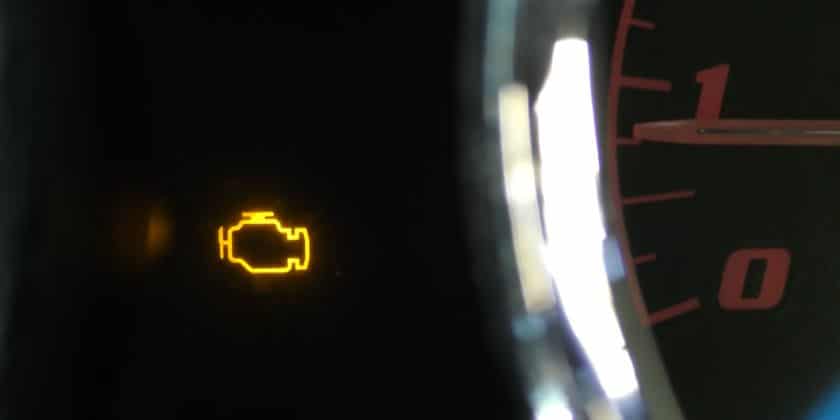
The first sign of a bad fuel pressure regulator can be the ‘Check Engine’ warning light appearing on your dashboard screen.
If the fuel pressure regulator does not work correctly, the fuel delivery system will not be able to provide the optimal amount of fuel, and the engine will not run efficiently.
The vehicle’s diagnostics system interprets this as an issue with the engine and triggers this warning light.
That said, many additional components can trigger the check engine warning light.
Therefore, you should use an OBD-II scanner and check the error code generated by the engine to confirm whether the problem is with the fuel pressure regulator or any other component.
Some common fuel pressure regulator-related error codes are P0300, P0301, P0087, P0088, P0172, and P0175.
2. Engine Misfiring
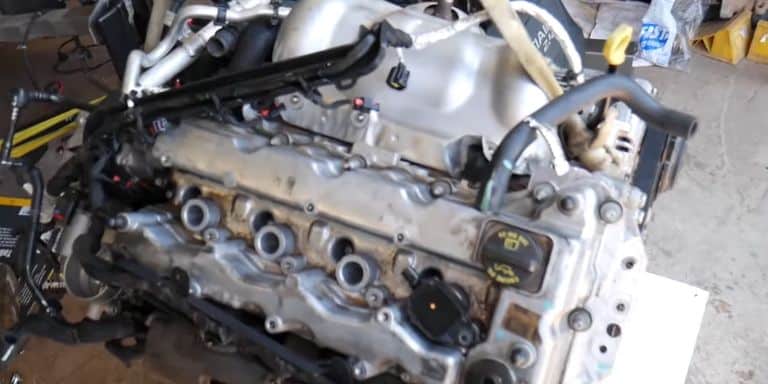
The excessive/insufficient fuel delivery caused by a failing fuel pressure regulator can result in an incorrect air-fuel mixture ratio, which, in turn, can cause the engine to misfire.
Some common symptoms of this problem include rough acceleration, delay in acceleration, or loss of power during acceleration.
If your vehicle is showing these signs while the components, like spark plugs, ignition coils, fuel injectors, etc., appear to be working fine, you should also check the fuel pressure regulator.
3. Fuel Leaks

Fuel leaks are another symptom you should pay close attention to.
Although these leaks can occur for various reasons, such as damaged fuel lines, a cracked fuel filter, a leaky fuel pump, etc., you can’t rule out the possibility of a bad fuel pressure regulator.
A worn-out fuel pressure regulator can have the fuel leak through its diaphragm and seals.
One way you can confirm the origin of these leaks is by inspecting the regulator. If you notice these leaks around the regulator or fuel lines, it indicates the fuel pump regulator is not working.
In such cases, you should repair or replace the regulator as these leaks result in poor fuel economy and can cause your vehicle to catch fire in rare cases.
4. Black Smoke Coming Out of the Exhaust System
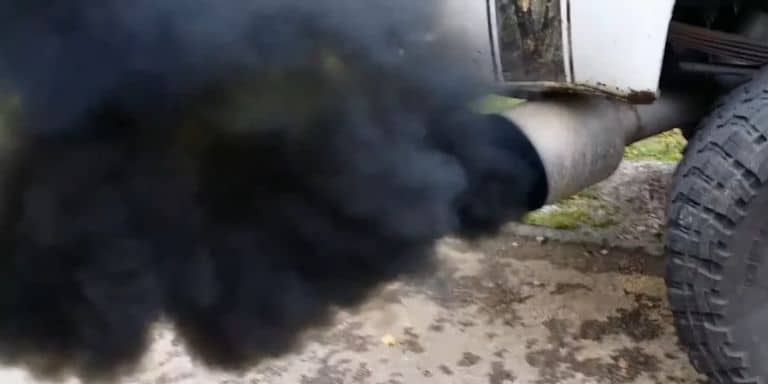
Under normal circumstances, the precise amount of air-fuel mixture is injected into the engine cylinders and is ignited by the spark plugs to start the combustion process.
Due to an ideal air-fuel ratio, the combustion process remains efficient and completely burns all the fuel. Due to this efficiency, a minimum amount of emissions are produced, and grey smoke comes out of the tailpipe.
On the other hand, if a rich air-fuel mixture comes into the engine cylinders due to a faulty fuel pressure regulator, it would result in an incomplete combustion as the amount of fuel is too high.
The unburnt will convert into small particles and come out of the tailpipe as a black-colored smoke.
This black smoke causes increased fuel consumption and reduced power. It is more harmful to the environment than regular smoke and can cost you a fine if the emission regulations in your area are strict.
With that said, many other components can cause black smoke to come out of the exhaust system, such as faulty spark plugs, bad O2 or MAF sensors, low-quality fuel, etc.
Therefore, look for additional symptoms mentioned in this post before drawing any conclusions.
5. Spark Plugs Covered in Soot
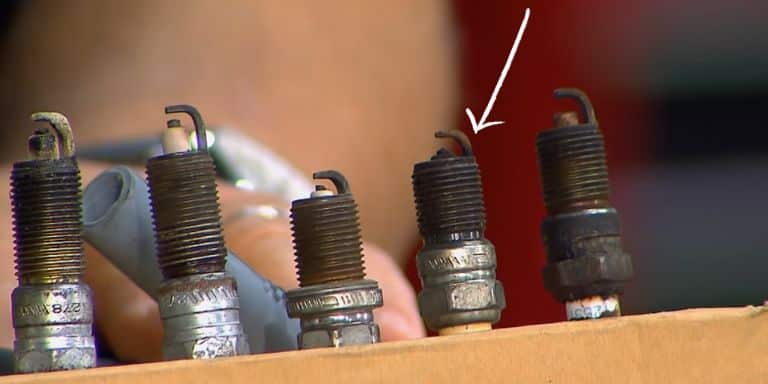
Another thing you can try when confirming whether your fuel pressure regulator is working is inspecting the spark plugs.
The incomplete combustion caused by incomplete combustion (due to rich fuel) can result in soot forming on the spark plugs’ electrodes and insulators.
You can think of the soot as a powdered form of the black smoke from the exhaust system.
It can cause the spark plugs not to have an efficient ignition process as they can no longer generate a consistent spark.
In some cases, spark plugs can foul due to prolonged coverage in soot. In such a condition, you should replace the spark plugs after fixing the fuel pressure regulator.
6. Fuel Smell From the Dipstick
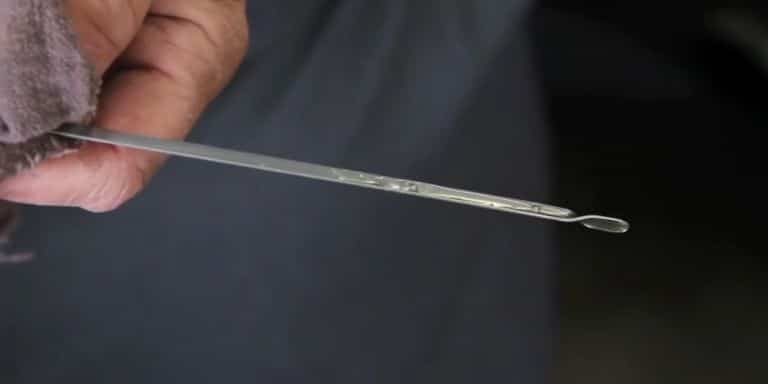
Occasionally, a faulty fuel pressure regulator can cause the fuel to enter the oil system and contact the dipstick.
To confirm this, pull out the dipstick and inspect it closely. If you get a fuel smell from it, it indicates a bad regulator.
7. Fuel in Vacuum Hose
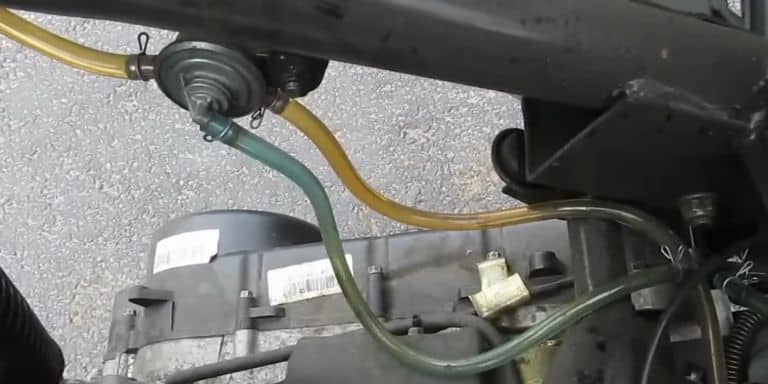
Fuel in the vacuum hose is another sign commonly associated with a bad fuel pressure regulator.
If a fuel pressure regulator is not working correctly, it might be unable to reduce the fuel pressure when the engine operates at low throttle positions. As a result, the excess fuel enters the vacuum hose connected to the regulator.
Remove the vacuum hose and inspect it to confirm whether that’s indeed the case. If there are fuel traces, the regulator is faulty.
8. Noisy Fuel Pump
Another way you can tell if the fuel pressure regulator is working or not is by listening to the fuel pump.
If a fuel pressure regulator goes bad and does not maintain the required fuel pressure, the pump will have to work harder to keep up with the demand.
This extra work puts more load on the pump and results in a loud noise coming out of it.
9. Out-of-Range Fuel Pressure Readings
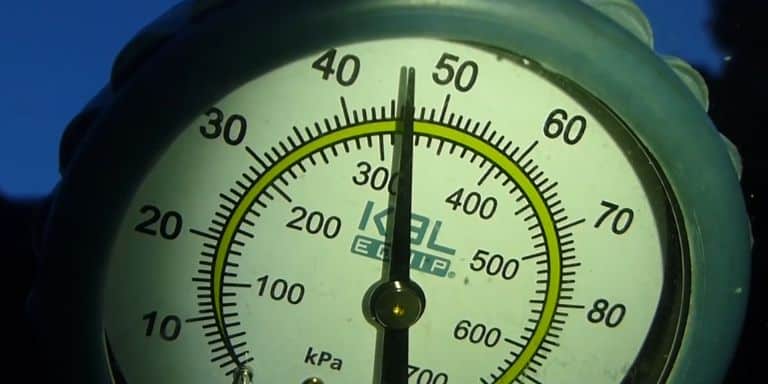
The fuel pressure readings are the last thing you can check for a failing fuel pressure regulator.
As a malfunctioning regulator causes the fuel pressure to go either too high or too low, you get pressure readings higher/lower than the normal range for your vehicle’s fuel system.
To confirm whether that’s indeed the case, you can measure the fuel pressure using a pressure gauge.
In addition to the fuel pressure regulator, there are many other components that can cause these readings to go higher/lower than usual, such as the clogged fuel filter, failing fuel pump, faulty fuel rail pressure sensor, etc.
But if you’re also experiencing other symptoms mentioned in this post, the fuel pressure regulator is likely to be the culprit.
Frequently Asked Questions
What are the Symptoms of Fuel Pressure Regulator Stuck Open?
Low fuel pressure, rough idle, fuel leaks, and the check engine warning light are some common symptoms of a fuel pressure regulator that is stuck open.
What are the Symptoms of Fuel Pressure Regulator Stuck Closed?
The most common symptoms of a fuel pressure regulator stuck closed are poor fuel economy, black smoke from exhaust, and rough idling. That’s because these are caused by a high fuel pressure due to the fuel pressure regulator being stuck closed.
How to Test a Fuel Pressure Regulator Without a Gauge?
If you don’t have a gauge to test a fuel pressure regulator, try listening to it closely. If you hear a faint hum, a fuel pressure regulator is working.
However, this method does not accurately depict the fuel pressure regulator’s performance.
Another method you can try is using an OBD-II scanner. If the scanner gives you any error code starting with the letter P, such as P0089, it usually indicates some fuel system or engine issue.
Like the above method, this one will only give you a rough idea – unless you get a DTC directly related to fuel pressure regulators.
Can a Fuel Pressure Regulator Cause No Start?
A bad fuel pressure regulator can result in too low/high fuel pressure, insufficient fuel supply, or rich/lean air-fuel mixture – potentially causing your vehicle not to start.
How to Unstick a Fuel Pressure Regulator?
You can try a couple of fixes to unstick the fuel pressure regulator.
First, gently tap the regulator, as it often leads to stuck regulator valves starting to work again. If the regulator looks dirty, you should clean it and remove any dirt or debris accumulated inside it.
If these methods don’t work, replace the fuel pressure regulator with a new one as a last resort.
Can a Bad Fuel Pressure Regulator Cause Rough Idle?
A bad fuel pressure regulator can cause a rich air-fuel mixture to enter the engine, resulting in an incomplete combustion process. This incomplete combustion can lead to rough idling or engine stalling.
Can a Bad Fuel Pressure Regulator Cause High Fuel Pressure?
A fuel pressure regulator that is stuck closed (or even partially closed) can cause a high fuel pressure in the fuel rail due to a restrictive flow.
This high fuel pressure gives you poor fuel economy and increased emissions, which can damage the engine in the long run.
Can a Car Run Without a Fuel Pressure Regulator?
While running a car without a fuel pressure regulator is technically possible, doing so may result in reduced engine power and poor fuel economy. That’s why you should avoid doing that.
Does a Fuel Pressure Regulator Return Fuel?
Yes, a fuel pressure regulator returns the extra fuel back to the gas tank.
